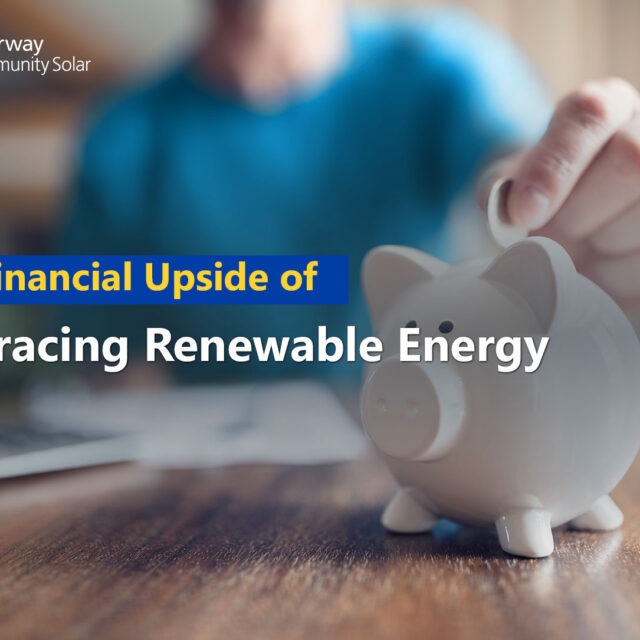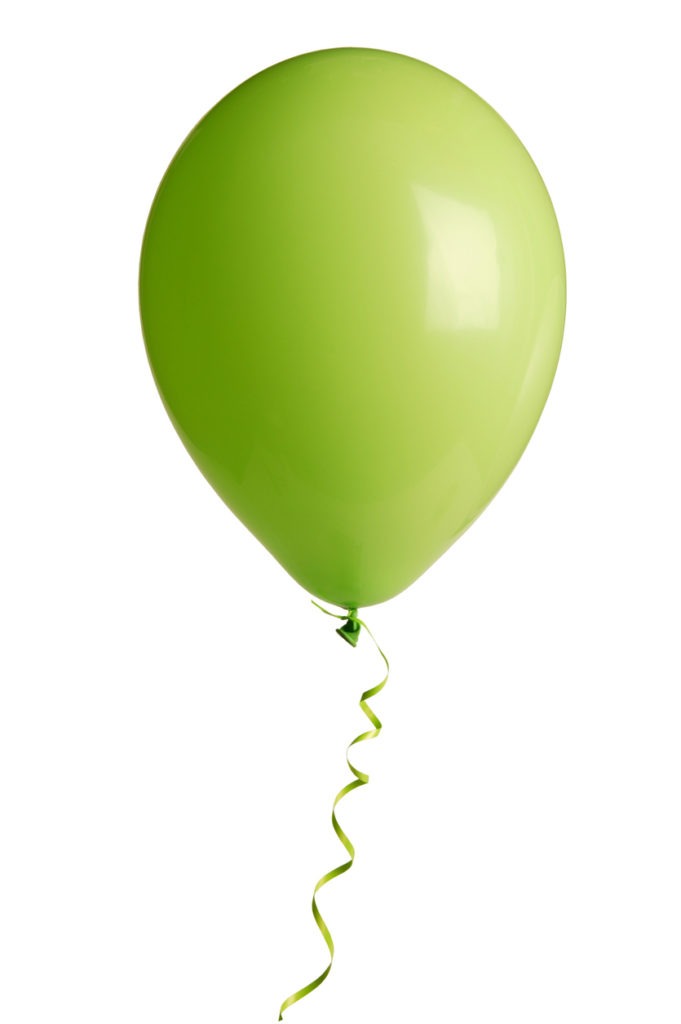
Creating a Balloon Powered Zipline
Parental Note: This experiment is geared towards ages 10 and up. The project may require some support to gather materials, fill balloon(s) with air and tape straw onto the balloon.
Additional Note: This experiment will take roughly 1 hour to complete.
Experiment Overview:
Wind is all around us, but it can be difficult to understand it as energy. One way we see wind energy in action is through wind turbines. The wind moves the turbine, creating renewable energy that feeds into the power grid – but how does this work in places with no wind? First and foremost, wind is the movement of air and that means wind has kinetic energy. An example of kinetic wind energy at home is through balloons. When some balloons are released, they go farther than others, just like some wind turbines produce more energy than others. With this balloon experiment, you’ll see how different amounts of air and air flow can affect a balloon or a wind turbine.
Before we start the experiment, let’s go over the science behind the different types of energy. When you inflate a balloon, it stores potential energy which is energy held by an object because of its position relative to other objects. When you release the inflated balloon, the potential energy is converted into kinetic energy, which is energy in motion. Newton’s Third Law of Motion states that for every action there is an equal and opposite reaction. You’ve experienced this law when you fill a balloon with air and let it go, watching the balloon fly around as the air comes out. Air is made of molecules and the air molecules that are pushed out of the balloon push against the molecules in the atmosphere, creating a reaction force called thrust that acts on the balloon. Thrust acts on the balloon with equal force, and in the opposite direction as the air that is squeezed out.
In this experiment, you will create a balloon zipline and investigate how the transfer of energy from potential to kinetic can be tracked as energy flows through a designed (man-made) or natural system. You will fill balloons with varying amounts of air (low, medium and high), and track the distance that each balloon travels when the balloon is released. You will use a zipline (straw and string) to control the direction that the balloon travels. The zipline will also allow you to easily observe and measure the transfer of energy that occurred. Later, you will use critical thinking skills to determine how the results of your balloon zipline experiment relate to the different amounts of kinetic energy available from wind across the planet to power electrical grids. Modern wind turbines are used to capture this kinetic energy from the wind and generate electricity.
Before beginning, think about the following questions and write down your predictions:
- Which balloon do you think will travel farthest along the zipline (low, medium or high volume)?
- How does your answer above relate to what you know about potential and kinetic energy?
Experiment Materials:
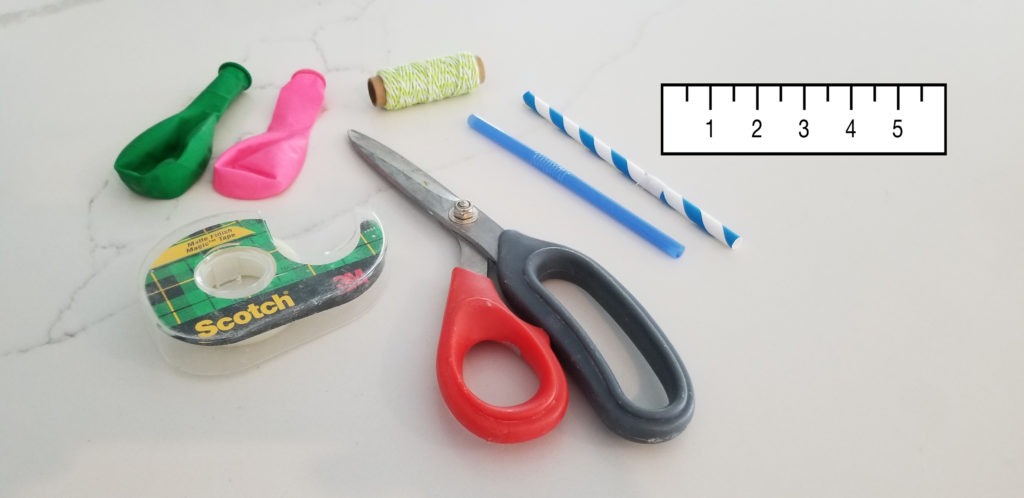
- 3 Balloons (you can use the same balloon or 3 different balloons)
- 1 straw – we recommend paper straws to be conscious of the environment
- 25 feet of kite string
- Tape
- Measuring tape or ruler
Experiment Process:
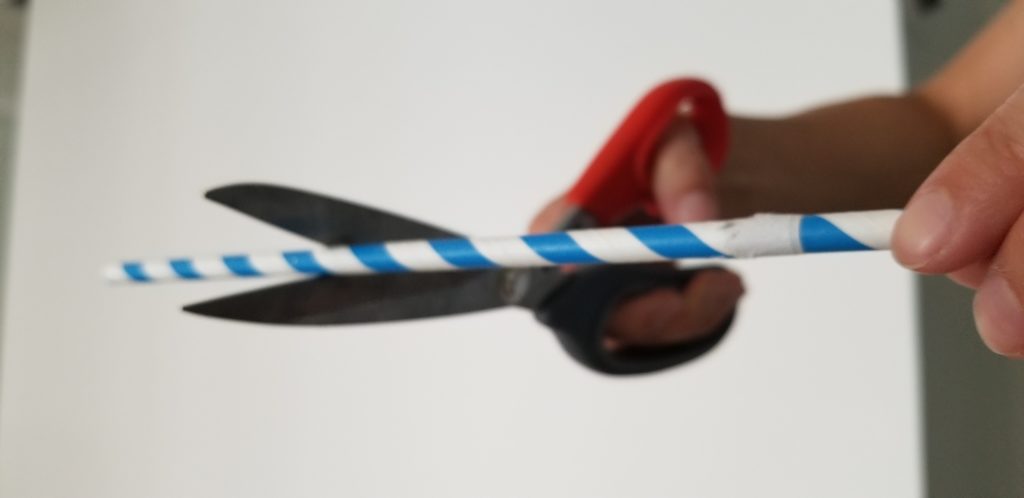
Step 1
Cut a 3-inch piece from a drinking straw.

Step 2
Cut a 25 ft piece of kite string (use measuring tape or ruler to measure).

Step 3
Pass one end of the string through the straw.
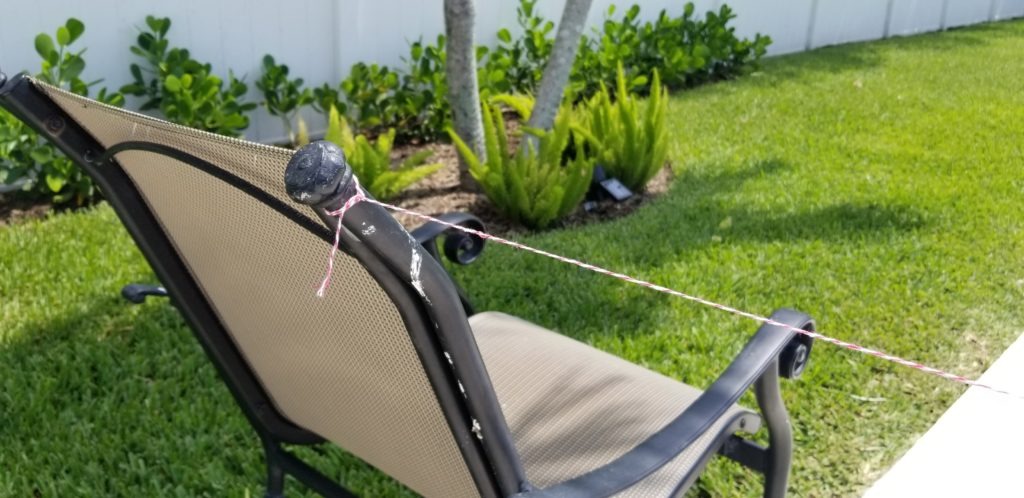
Step 4
Tie the ends of the string to two objects (chair, door, tree, etc.) spaced 25 ft. apart so that the string runs in a straight line and is pulled tight.

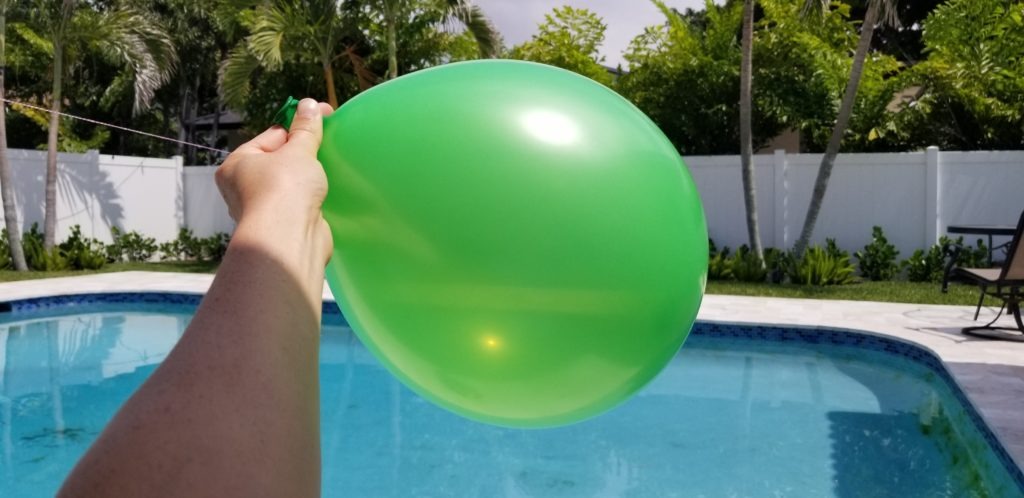
Step 5
For the first balloon, fill it with a low volume of air. Pinch the neck of the balloon with your pointer finger and thumb to prevent air from leaking out. Do not tie the end of the balloon!
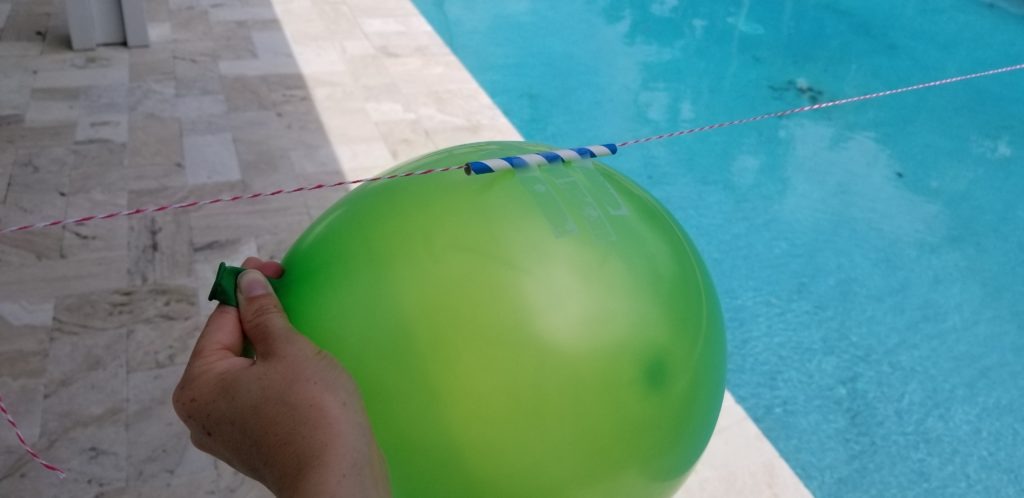
Step 6
Tape the balloon to the straw (ask an adult for assistance while you pinch the balloon so that air does not leak out).
Step 7
Release the balloon.
Step 8
Use the measuring tape or ruler to measure the distance the balloon traveled along the zipline, and then record the results in a chart similar to the one below:
| Balloon | Volume of Air | Distance Traveled (in) |
| Balloon 1 | Low | |
| Balloon 2 | Medium | |
| Balloon 3 | High |
Step 9
Repeat the above steps two more times by filling the balloon with a medium volume of air and then a high volume of air. You will compare any changes in the distance the balloon travels along the zipline.
Share Your Results
- Which balloon traveled the farthest?
- Which balloon produced the most kinetic energy while traveling along the zipline?
Conclusions:
When you inflate a balloon, it stores potential energy. When you released the blown balloon, the potential energy is converted into kinetic energy, which is energy in motion. The air came out with some force from the balloon’s mouth towards you. It caused a force on the balloon which was equal in amount, but in opposite direction (from the balloon’s mouth to the balloon’s head). This force propelled the balloon in a forward direction away from you, along the zipline. When you added more air to fill your balloon each time, you should have noticed the difference in force in terms of the speed and the distance that the balloon traveled in each case.
Extension:
Wind is moving air. You cannot see air, but it is all around you. You cannot see the wind, but you know it is there, and sometimes you can feel it as a cool breeze against your skin. Wind is a form of kinetic energy, which is energy that is in motion. For centuries people have used windmills to harness that kinetic wind energy into a mechanical form to perform tasks such as grinding up grains for food. Today, we use wind turbines to produce electricity that can be fed into a local power grid. The wind blows all over the planet, but certain areas have land features that can make the wind blow faster or more frequently or slower and less frequently. In some places, there is a difference in the amount of wind from day to night, while other areas have great seasonal variation from summer to winter. Places such as prairies, mountains, and coasts often experience stronger winds. Local winds can also change direction and speed suddenly, if land surfaces become uneven or if large forests or tall buildings and skyscrapers are in their path.
Extension Questions:
- How do the results of your experiment relate to differences in wind speed and amount across the planet? (hint: think about the balloons and wind in terms of potential and kinetic energy)
- How might this knowledge affect your decision on where to build a wind farm?


